英国短毛猫长猫藓怎么办?猫藓是猫咪最容易患上的一种皮肤疾病,在英短得了猫藓的时候要如何治疗呢?小编带来一些经验。...
胡庆勇 2023-08-19 20:20:25 浏览 52994
腊肠犬FCI标准,腊肠犬FCI标准是国际标准,听过了解FCI标准,我们可以判断一只腊肠犬是不是纯种以及是不是有价值、多高价值的腊肠犬了。经常听到爱狗人士说,不知道自己的狗狗是不是纯种,其实,可以根据FCI标准来 进行对比,如果差别不大,那就说明腊肠犬是纯种,如果差别大就是说明不是很好严重缺陷的可能就是串串腊肠犬了。下面52狗狗网小编就来给爱狗人士分享下,腊肠犬的FCI标准:
FCI编号:148C1
FCI所属组别:猎獾犬(腊肠犬)
身高:雄性兔型短毛腊肠肩高11.8-0.0英寸(30.0-0.0厘米) 雌性兔型短毛腊肠肩高11.8-0.0英寸(30.0-0.0厘米)
体重范围:雄性兔型短毛腊肠体重10.6-0.0磅(4.8-0.0公斤) 雌性兔型短毛腊肠体重10.6-0.0磅(4.8-0.0公斤)
腊肠犬头部
(头部、面部、眼睛、耳朵、鼻镜、嘴部、口吻、鄂部、牙齿)
头部:由上面或者侧面观察,显得较长。头部向着鼻子逐渐变细,但皮质不粗糙。眼脊明显,鼻子软骨与鼻梁长而窄。
头骨:很平,逐渐与轻微拱起的鼻梁相融合。
止部:唯一显示。
鼻子:皮质发达。
口吻:长、足够宽,强有力。能分开与眼线聚合。
唇部:肌肉拉得紧,能很好地盖住下颌。
颌/牙齿:上下颌发达。剪状咬合,甚至闭合紧。理想情况下,根据有关狗嘴的要求(要有强有力的能确实相互紧密结合的犬牙),要具备齐全的42颗牙齿。眼睛
腊肠犬躯干
(颈部、胸部、肋骨、腰部和背部、躯体前部、皮肤)
颈部:足够长,肌肉发达,喉部皮肉紧密,颈背轻微拱起,颈部活动自如,位置高。
背线:由颈部向略成坡度的臀部和谐地连在一起。
肩部:明显。背部:位于高高的肩后,背线由胸椎骨笔直或者倾斜地贯穿至尾部。肌肉结实,发达。
腰部:肌肉强健,足够长。
臀部:宽阔而足够长,略具坡度。
胸部:胸骨发达,很突出,以至于似乎两边有轻微的凹陷。由前面观察,肋骨呈椭圆形。由上面与侧面观察,留下了较大的空间,这给心脏与肺的发展提供了充

腊肠犬四肢
(前驱、肩部、上肢、胶骨关节、胶骨、足掌、后驱、大腿、飞节、关节和飞节指甲)
前躯:肌肉发达,角度分明。由前面观察,前腿洁白,骨量充足,站时笔直;足尖笔直向前。
肩部:肌肉富有弹性。长而具有坡度的肩胛骨,与胸部接合紧密。
上臂:与肩胛骨长度相等,与肩胛骨的角度相等。骨质强健,肌肉发达,与肋骨接合紧密,但是活动自如。
肘部:既不内展,也不外翻。
前臂:相对短,但是其长度要达到地面以上的距离约为其肩高的三分之一。应尽可能的直立。
前足:脚趾紧靠,明显拱起,具有强健而耐磨的脚垫,有很硬的短
腊肠犬尾巴
尾巴:不能翘得太高,成为背线的延续。允许尾部的最后三分之一部分有轻微的弯曲。
腊肠犬步态/运动
运动时应能覆盖住地面,具有流线形,充满活力,强有力的后驱运动能带来轻微的能传送到背线的弹力。尾巴应连续地延伸至背线,轻微地拱起。前后腿能平行的活动。
标准腊肠犬(Dachshunds(Standard))FCI繁育标准(英文版)
FCI-Standard N° 148 / 13. 07. 2001 / GB
DACHSHUND
TRANSLATION : Mr. Paschoud and his collaborators, updated by Mrs.C.Seidler.
ORIGIN : Germany.
DATE OF PUBLICATION OF THE ORIGINAL VALID STANDARD : 13.03.2001.
UTILIZATION :Hunting dog above and below ground.
CLASSIFICATION F.C.I. :
Group4 Dachshunds.
With working trial.
BRIEF HISTORICAL SUMMARY : The Dachshund, also called Dackel or Teckel, has been known since the Middle Ages. From the « Bracken », dogs were constantly bred which were specially suitable for hunting below ground. From these short legged dogs, the Dachshund evolved and was recognised as one of the most versatile and useful breeds of hunting dogs. He also has excellent achievements above ground, hunting while giving tongue, searching and tracking wounded game. The oldest Club devoted to the breeding of Dachshunds is the « Deutsche Teckelklub » e.V., founded in 1888.
For decades the Dachshund has been bred in three sizes (Teckel, Miniature Teckel and Rabbit Teckel) and in three different kinds of coat (Smooth-haired, Wire-haired and Long-haired).
GENERAL APPEARANCE : Low, short legged, elongated but compact build, very muscular with cheeky, challenging head carriage and alert facial expression. His general appearance is typical of his sex. In spite of his legs being short in relation to the long body, he is very mobile and lithe.
IMPORTANT PROPORTIONS : With the distance above ground level of about one third of the height at withers, the body length should be in harmonious relation to height at withers, about 1 to 1,7 - 1,8.
BEHAVIOUR /TEMPERAMENT : Friendly by nature, neither nervous nor aggressive, with even temperament. Passionate, persevering and fast hunting dog with an excellent nose.
HEAD : Elongated as seen from above and in profile. Tapering uniformly towards the nose leather yet not pointed. Superciliary ridges clearly defined. Nasal cartilage and bridge of nose, long and narrow.
CRANIAL REGION :
Skull : Rather flat, gradually merging with the slightly arched nasal bridge.
Stop : Only indicated.
FACIAL REGION :
Nose : Leather well developed.
Muzzle : Long, sufficiently broad and strong. Can be opened wide, split to level of eye.
Lips : Taut fitting, covering the lower jaw well.
Jaws/Teeth : Well developed upper and lower jaw. Scissor bite, even and closing firmly. Ideally, complete set of 42 teeth according to requirements for a dog’s mouth with strong Canines exactly fitting into each other.
Eyes : Medium size, oval, set well apart, with clear energetic yet friendly expression. Not piercing. Colour bright, dark reddish brown to blackish brown in all coat colours. Wall, fish or pearl eyes in dapple dogs are not desired but may be tolerated.
Ears : Set on high, not too far forward. Sufficiently long but not exaggerated. Rounded, not narrow, pointed or folded. Mobile with front edge lying close to cheek.
NECK : Sufficiently long, muscular. Tight fitting skin on throat. Lightly arched nape of neck, carried freely and high.
BODY :
Upper line : Blending harmoniously from neck to slightly sloping croup.
Withers : Pronounced.
Back : Behind the high withers, topline running from the thoracic vertebrae straight or slightly inclined to the rear. Firm and well muscled.
Loins : Strongly muscled. Sufficiently long.
Croup : Broad and sufficiently long. Slightly sloping.
Chest : Sternum well developed and so prominent that slight depressions appear on either side. The ribcage, seen from the front, is oval. Seen from above and the side, it is roomy, giving plenty of space for the heart and lung development. Ribs carried well back. With correct length and angulation of shoulder blade and upper arm, the front leg covers the lowest point of the sternal line in profile.
Underline and Belly : Slight tuck up.
TAIL : Not set on too high, carried in continuation of topline. A slight curve in the last third of the tail is permitted.
LIMBS
FOREQUARTERS :
General : Strongly muscled, well angulated. Seen from front, clean front legs, standing straight with good strength of bone; feet pointing straight forward.
Shoulders : Pliant muscles. Long sloping shoulder blade, fitting close to chest.
Upper arm : Equal in length to shoulder blade, set almost at right angle to same. Strong boned and well muscled, close fitting to ribs but free in movement.
Elbows : Turning neither in nor out.
Forearm : Short, yet so long that the dog’s distance from the ground is about one third of its height at withers. As straight as possible.
Pastern joints : Slightly closer together than the shoulder joints.
Pastern : Seen from the side, should be neither steep nor noticeably inclined forward.
Front feet : Toes close together, well arched with strong, resistant, well cushioned pads and short strong nails. The fifth toe has no function but must not be removed.
HINDQUARTERS :
General : Strongly muscled, in correct proportion to forequarters. Strong angulation of stifles and hock joints. Hindlegs parallel standing neither close nor wide apart.
Upper thigh : Should be of good length and well muscled.
Stifle (joint) : Broad and strong with pronounced angulation.
Lower thigh : Short, almost at right angle to upper thigh. Well muscled.
Hock joint : Clean with strong tendons.
Hock : Relatively long, mobile towards lower thigh. Lightly curved forward.
Hind feet : Four close knit toes, well arched. Standing firmly on strong pads.
GAIT / MOVEMENT : Movement should be ground covering, flowing and energetic, with far reaching front strides without much lift, and strong rear drive movement should produce slightly springy transmission to backline. Tail should be carried in harmonious continuation of backline, slightly sloping. Front and hindlegs have parallel movement.
SKIN : Tight fitting.
COAT
SMOOTH-HAIRED
HAIR : Short, dense, shiny, smooth fitting, tight and harsh. Not showing any bald patches anywhere.
Tail : Fine, fully but not too profusely coated. Somewhat longer guard hair on underside is not a fault.
COLOUR :
a)Whole-coloured : Red, reddish yellow, yellow, all with or without interspersed black hairs. A clear colour is preferable and red is of greater value than reddish yellow or yellow. Even dogs with strongly interspersed black hairs are classed as whole-colour, not as other colours. White is not desired but single small spots do not disqualify. Nose and nails black. reddish-brown is also permissible but not desirable.
b) Two-coloured : Deep black or brown, each with tan or yellow markings (« Brand ») over eyes, on sides of muzzle and of lower lip, on inner edge of leathers, on forechest, on inside and rear side of legs, also on the feet, round the vent and from there reaching to about one third or one-half of the underside of the tail. Nose and nails black in black dogs, brown in brown dogs. White is not desired but single small spots do not disqualify. Tan or yellow marking (« Brand ») too wide spread is undesirable.
c) Dappled (Tiger-brindle, brindle) : The basic colour is always the dark colour (black, red or grey). Desired are irregular grey or beige patches (large patches not desired). Neither the dark nor the light colour should be predominant. The colour of a brindle Dachshund is red or yellow with darker brindle. Nose and toenails are the same as with the whole- and two-coloured.
WIRE-HAIRED
HAIR : With exception of muzzle, eyebrows and leathers, perfectly even close fitting, dense wiry topcoat with undercoat. The muzzle has a clearly defined beard. Eyebrows are bushy. On the leathers, the coat is shorter than on the body, almost smooth.
Tail : Well and evenly covered with close fitting coat.
COLOUR : Dominantly light to dark wild boar colour as well as colour of dry leaves. Otherwise same colours as described under Smooth-haired a-c.
LONG-HAIRED
HAIR : The sleek shiny coat, with undercoat and close fitting to body, is longer at the throat and on underside of body. On leathers the hair must extend beyond the lower edge of ears (feathering). Distinct feathers on rear side of legs. Achieves its greatest length on underside of tail and there forms a veritable flag.
COLOUR : As described in Smooth-haired a-c.
SIZE AND WEIGHT/ IMPORTANT MEASUREMENTS :
Dachshund : Circumference of chest 35 cm. Upper weight limit about 9 kg.
Miniature Dachshund : Circumference of chest from 30 to 35 cm measured when at least 15 months old.
Rabbit Dachshund : Chest circumference up to 30 cm measured when at least 15 months.
Weight : Standard Dachshund up to about 9 kg.
FAULTS : Any departure from the foregoing points should be considered a fault and the seriousness with which the fault should be regarded should be in exact proportion to its degree.
•M3 (Molar 3) are not to be considered when judging. Lack of 2PM1 (Premolar 1) is not to be penalised. The absence of PM2 should be regarded as a fault, if other than M3, no other teeth are missing, also a departure from the correctly closing scissor bite.
SERIOUS FAULTS :
•Weak, long-legged or body trailing on ground.
•The absence of teeth other than those described among « faults » or « eliminating faults ».
•Wall eye in any colour other than dapple.
•Pointed, very folded ear leathers.
•Body suspended between shoulders.
•Hollow back, roach back.
•Weak loins.
•Marked running up at rear (croup higher than withers).
•Chest too weak.
•Flanks with whippety-like tuck up.
•Badly angulated fore- and hindquarters.
•Narrow hindquarters, lacking muscle.
•Cow hocks or bow legs.
•Feet turning markedly inwards or outwards.
•Splayed toes.
•Heavy, clumsy, waddling movement.
FAULTY COAT :
SMOOTH -HAIRED DACHSHUND :
•Coat too fine or thin. Bald patches on leathers (leather ear), other bald areas.
•Coat much too coarse and much too profuse.
•Brush like tail.
•Tail partially or wholly hairless.
•Black colour without any marking (« Brand »).
WIRE-HAIRED DACHSHUND :
•Soft coat, whether long or short.
•Long coat, standing away from body in all directions.
•Curly or wavy coat.
•Soft coat on head.
•Flag on tail.
•Lack of beard.
•Lack of undercoat.
•Short coat.
LONG-HAIRED DACHSHUND :
•Coat of equal length all over body.
•Wavy or shaggy coat.
•Lack of flag (tail).
•Lack of overhanging feathering on ears.
•Short coat.
•Pronounced parting in coat on back.
•Hair too long between toes.
ELIMINATING FAULTS :
•Very anxious or aggressive nature.
•Overshot or undershot mouth, wry mouth.
•Faulty position of the lower canines.
•Absence of one or more canines; absence of one or more incisors.
•Lack of other premolars or molars.
Exceptions : The two PM1, one PM2 without consideration of M3, as mentioned under Faults.
•Chest : Sternum cut off.
•Any fault of tail.
•Very loose shoulders.
•Knuckling over in pasterns.
•Black colour without markings (Brand); white colour with or without markings (Brand).
•Colours other than those listed under “Colour”.
Any dog clearly showing physical or behavioural abnormalities shall be disqualified.
N.B. : Male animals should have two apparently normal testicles fully descended into the scrotum.
英国短毛猫长猫藓怎么办?猫藓是猫咪最容易患上的一种皮肤疾病,在英短得了猫藓的时候要如何治疗呢?小编带来一些经验。...
胡庆勇 2023-08-19 20:20:25 浏览 52994
一、贵宾犬有哪些品种?贵宾狗有4种,每种狗的价格都不相同1、茶杯贵宾它们的身体通常不会超过20公分,重量在1.5kg以下,可以拿在手里,看上去很是娇小,大约有茶杯那么大。价格通常在2000-3000之间。2、玩具贵宾我们最普通的贵宾狗,大概有24-28公分,重约7公斤,比一般的茶杯狗要强壮许多,许多人都把它剪成了泰迪熊的样子。价格在八百到三千之间。3、标准贵宾普通的贵宾狗,体长39公分,体......
平凡人 2023-08-19 20:04:05 浏览 26416
一、贵宾犬智商有多高?狗对主人的服从性是肯定的,但是也要看主人对待狗的态度,打,不能解决根本问题!我家老大是白贵,大迷你,不爱叫,【爱叫和不爱叫也是看狗狗的性格,跟人一样,有外向内向】几乎跟狗打架也不会叫,后来我看过一些资料后经过训练,现在我让他叫他会叫,让他闭嘴他会乖乖闭嘴,不是狗狗不聪明,是方法没有用对,【这句话我一直都很相信,没有笨的狗,只有不耐心的主人】贵宾不止是聪明的问题,就我切......
&·J 2023-08-19 19:56:10 浏览 58310
一、贵宾犬智商相当于几岁?五岁,贵宾犬的智商排名所有狗狗中的第二名,它的智商能够达到人类的5岁水平,在平常训练中能够很快的记住各项指令,只需要告诉它四五次就可以对主人的指令迅速做出反应,在很长时间都不会忘记。贵宾犬能够在生活中听懂主人说的话,虽然贵宾犬不能够直接与主人进行沟通,但是它会用自己的行为来告诉主人听懂了,比如在主人需要贵宾犬拿什么物品,它都会马上拿过来给主人。在平常生活中贵宾犬会......
江佳原 2023-08-19 19:56:09 浏览 8327
一、比熊犬的优缺点及性格?比熊犬很可爱,他的优点是不咬人性格温顺,而且不掉毛,但缺点是智商比较低,同样它的毛发需要经常修理,比较费钱。二、金毛犬的性格与特点?金毛属于群居型的动物。金毛犬身材匀称,智商非常高,而且性格温顺、有活力,所以非常招人喜欢。服从性,狗对自己认同的首领会完全服从。爱犬的主人当然就是饲主.它只会对自己的主人做出仰躺,露出最大弱点的肚子这种毫无防备的动作,代表自己完全没有......
愚人 2023-08-19 19:52:07 浏览 90009
一、蝴蝶犬串串能活多少年?串串狗寿命相对纯种狗狗寿命要长,养好了能活到十六岁左右,有个别的能到二十岁。狗狗越是纯种的寿命越短,主要原因为近亲繁殖,狗狗容易得遗传病,严重影响狗狗寿命。串串反而活岁数大,主要原因是不同品种狗狗繁殖二、杨树能活多少年?杨树能活多少年?杨树是一种速生树种,生长成材非常快,十年左右便可采伐利用,所以在村落或田野里,很少有几十年的杨树成活存在,所以我认为,杨树最多成话......
日落 2023-08-19 19:40:06 浏览 29703
一、丝毛梗犬聪明嘛?聪明。目前它的智商在犬类的排名里面应该是37位,还算是很聪明的狗狗,也能说是中等偏上的。就在训练的时候,如果基本的动作重复了十五次左右就能有反应了。在初级阶段需要反复去进行训练,那么这样回应的几率能够达到70%。整体来说它的表现还是很出色的,就是动作可能没有那么连贯,反应也会稍微慢一拍。如果在训练的过程中没有经过经验,或者没有什么耐心,对待它也不是很严格,那么它的表现可......
清凉一夏 2023-08-19 19:30:11 浏览 32766
一、茶杯犬的饲养过程太残酷 别看茶杯犬很可爱,其实可爱的背后很残酷,有些人为了造出茶杯犬,专门给它注射停止生长的药剂,吃减肥药,严格控制其饮食。 还有的小狗还没有发育成熟,就被提前剖腹产取了,非常残忍。为阻止更多的狗狗被捕杀,人们养狗的数量正在减少。  二、狗茶杯有病缠身 近交可以增加遗传性疾病的风险,比如癫痫,关节问题等等。把这些狗狗和其它狗狗一起养起来,希望养出一窝只有很小体型的狗狗......
外墙漆--谭先生 2023-08-19 16:26:06 浏览 85153
照顾好比熊宝宝的是需要花费很多时间的,一、玩耍,比熊非常活泼好动,虽然胆子不大但对外界充满好奇,只在室内玩耍远远不能满足他充沛的精力和躁动的心。所以,尽量多的户外活动是养好比熊宝宝,保持心情愉快的关键。 二、卫生,比熊宝宝毛长且细软,很容易产生静电,招土招灰,毛发很容易从雪白变得灰不溜秋甚至黑乎乎的。所以,既要注意外出穿好衣服进行防护,回家后也要马上梳洗打理,腿部,耳朵,屁屁要马上清洗,吹......
才龙 2023-08-19 16:12:05 浏览 94898
如果真的从来没有养过狗的人其实并不太建议养柴犬。从我个人的养柴经验来看,柴犬相对独立,性格偏向于猫,聪明但是服从力会稍逊于其他犬种。但是如果主人能有耐心从小对柴犬进行社会化训练,出门一定栓好牵引绳并且喜欢爱干净的狗的话,柴犬的确是一个不错的选择。 养一只柴犬怎么样? 柴犬因各种网红表情包而走红网络,在网络上“笑”看风云的同时,也虏获了一大票狗友的心。 1、智商不高,但有后天加成 ......
东风本田@美 2023-08-19 15:48:12 浏览 88650

一提到藏獒的价格,大家都会想到神秘的高原,广袤的草场上藏獒守护这羊群,随时驱赶狼群来袭击羊!甚至有狮子、猎豹来偷吃!这种牧民的保护神,价格自然不会低了。再加上前几年的藏獒动则几万、几百万,立刻感觉到这不是普通老百姓能够养的神物!完全是大户有钱人家看护财产的看护犬、护卫犬了。那么藏獒真正的价格是多少呢?下面52狗狗网小编就来给大家揭秘藏獒那些不为人知的真实价格! 前几年天价藏獒火爆内

伊比赞猎犬怎么美容呢?伊比赞猎犬的美容需要定期进行,以下是伊比赞猎犬美容的步骤:1.梳理毛发:使用针刷、梳子等工具梳理伊比赞猎犬的毛发,以去除杂质和打结的毛发。梳理时要注意不要过度拉扯狗狗的皮肤,以免疼痛和伤害。2.洗澡:选择专门针对犬只的洗发水和护发素,给伊比赞猎犬洗澡。在洗澡时,要注意不要让水流进狗狗的耳朵、眼睛和口腔。3.吹干:使用吹风机或毛巾将伊比赞猎犬的毛发吹干,以免湿发引起皮肤病。4
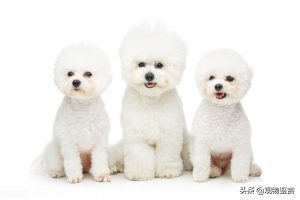
比熊犬性格温顺、活泼可爱,在小型犬中是比较好饲养的一种,是一种很好的伴侣宠物。十个不养比熊的理由:一、难以照料;二、费用较高;三、敏感多疑易应激;四、需要经常打理毛发;五、不会定点上厕所;六、泪痕较多;七、骨骼脆弱;八、脾气暴躁;九、太过于粘人;十、不喜欢拘束。养比熊要花费大量的时间、精力,时间及经济上不够宽裕的话,最好不要养这种狗狗。一、照料起来比较困难比熊犬体质较差,气温骤降、温差过大都可能
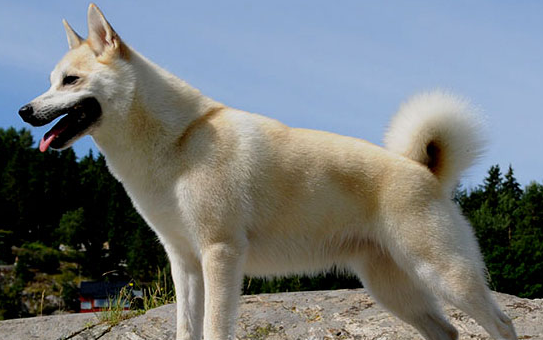
挪威布哈德犬怎么训练?挪威布哈德犬是一种高度适应能力的犬种,训练起来也很简单。以下是一些常见的训练方法:挪威布哈德犬的能力不同,因此,要采取与之相适应的速度来训练,绝不能与别的挪威布哈德犬比差距,从而认为“我家的挪威布哈德犬悟性真差”。对自家的挪威布哈德犬要充满信心。在训练的过程中,如果碰到什么疑难问题,不要自己瞎鼓捣或者猜想,而是要随时向专家或兽医咨询。这样才不会耽误你的狗狗。喂养挪威布哈德犬
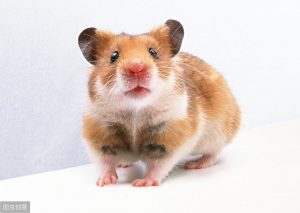
看到一只可爱的小仓鼠,是不是也萌发了想带它回家的想法呢?但是仓鼠是不是适合你饲养的宠物呢?不管是什么宠物,在养它之前都需要考虑很多因素,不是想养就能养好那么简单的,那么今天我们就来说说关于饲养小仓鼠那些事吧~仓鼠对你来说是合适的宠物吗?为了得到这个问题的答案,我们将给你一个关于照顾仓鼠的深入描述。我们还将讨论业主如何与他们的仓鼠互动,以便您更好地了解您将与仓鼠有什么样的关系。为了得到这个问题的答
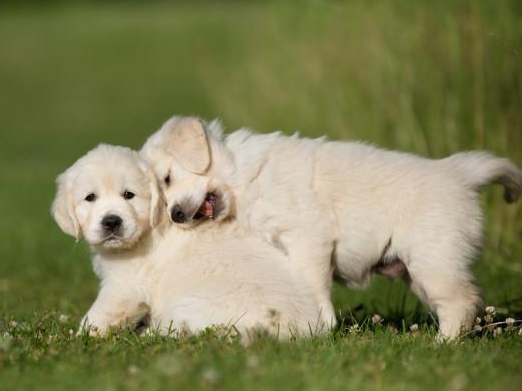
相信很多人都喜欢金毛犬吧,如果你也想要养一只金毛犬的话,那么在购买金毛犬的时候,一定要注意价格,千万别被人坑了,今天小编就来告诉你,一只纯种的金毛犬大概多少钱,别买贵了!普通金毛多少钱?如果你不想要买一只纯种的金毛犬,那么买一只普通的金毛犬也是可以的,一只普通的金毛犬价格大概在1500~3000左右,有些地方会更低800左右也能买到。纯种金毛多少钱?一只品相好一点的纯种金毛价格还是挺高的,一只纯

银狐犬是一种漂亮的宠物狗狗品种,也叫日本尖嘴,是狐狸犬的一种。银狐犬被毛特别的吸引人,柔顺光亮,是美女爱狗人士最喜欢的一个品种。虽然说银狐犬被毛漂亮,但它们的被毛也需要主人用心的呵护,日常饲养饮食也要科学合理搭配,这样才能饲养出漂亮的银狐犬来。有部分爱狗人士不知道银狐犬吃什么,银狐犬适合吃什么食物呢?下面52狗狗网小编就来告诉大家: 1、商品狗粮 商品狗粮是银狐犬最适合吃的食物

挪威森林公猫绝育手术后的护理 如果你的猫是公猫,你就完全不必担心,只要注意手术期间大夫是否给他点了眼药水或眼药膏即可。此举旨在防止麻药中的猫咪由于不会闭眼而眼干。术后几小时即可一切恢复正常。 挪威森林母猫绝育术后的护理 如果是母猫,担心可能要多一些。首先,大夫的临床经验一定要丰富,刀口应该控制在3针以内,如果刀口过长,猫咪要多遭几天罪。正常情况下,不算准备时间在手术台上的时间应该不超过2
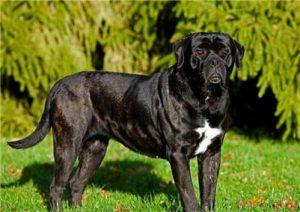
卡斯罗犬是常见的宠物狗狗,很多朋友想要饲养,但是由于缺乏卡斯罗犬的选购常识,导致迟迟未入手。今天为你带来卡斯罗犬的价格以及选购方法,希望可以帮到各位铲屎官。卡斯罗犬的价格行情:看品相,一般3000到10000不等。品相好的幼犬标价在3000左右。全黑色的皮毛,看上去很精神的大约得两万左右一只,而长相很一般的,毛色又不均称的大约两三千块就可以买到了。杂交卡斯罗犬价格,1900到3000。最多300